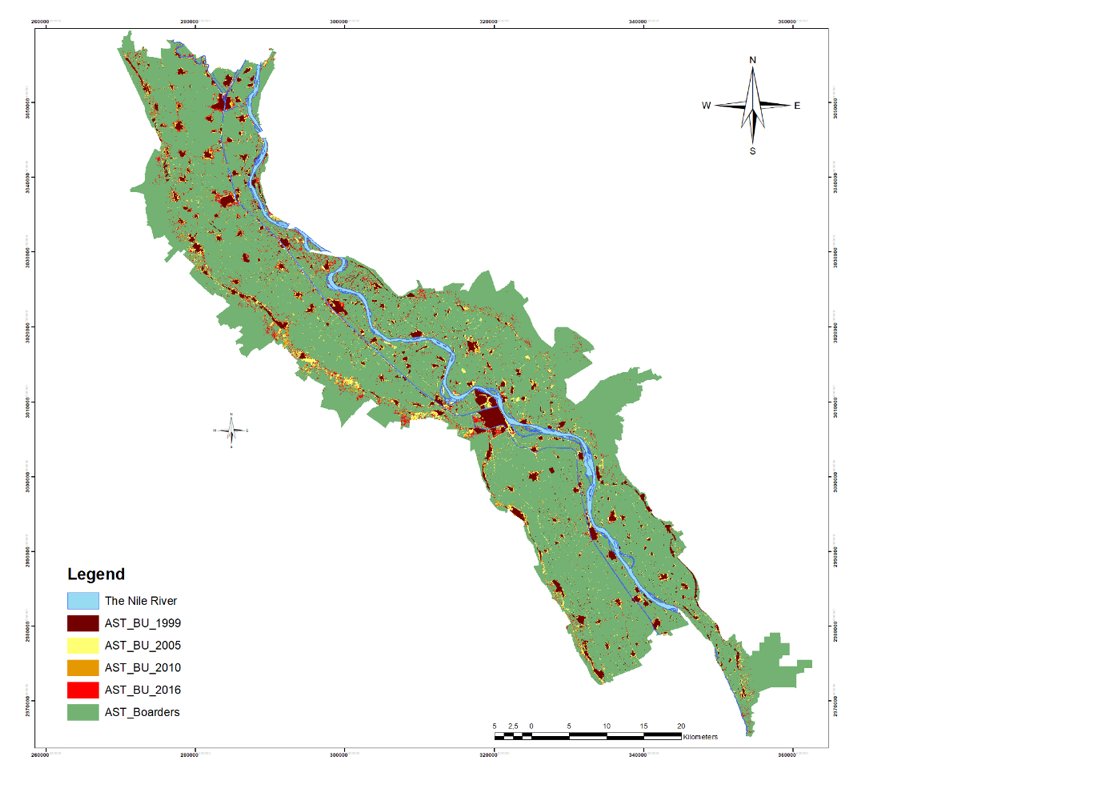| Student: | M.M.I.A. Abdelkader (Mahmood Mohamad Ibrahim Ahmed) |
|---|---|
| Timeline: | January 2017 - 12 January 2021 |
Since the 1950s, the Nile Valley and Delta (NVD) in Egypt have faced an accelerated human settlement growth accompanied by weak planning, governance, and coordination. Regardless of many physical plans which aimed to control this accelerating growth and preserve the agricultural land, many urban and rural settlements have expanded at the expense of the best fertile lands in the NVD. With 98% of Egypt’s population (estimated 104 Million inhabitants in 2018) settled in the NVD, an extensive process of informal human settlement growth is estimated to continue.
Because of agricultural areas declination, many problems have emerged such as food insecurity where many primary crops (e.g., wheat) are imported after it used to be exported in the past. Not to mention the socioeconomic consequences of human settlement growth in the Nile Valley such as unemployment where it has been estimated that losing one Acre may lead to the loss of one direct job opportunity and 0.7 indirect job opportunity.
Although many studies have addressed human settlement growth on agricultural in the in urban areas, there is a lack of knowledge on the spatiotemporal dynamics of human settlements in rural areas of the Nile Valley (south of Cairo). Moreover, there is a lack of knowledge about the driving forces of informal human settlement growth in rural areas. Therefore, this project is conducted to analyze human settlement growth and its driving forces and to examine the contemporary planning processes in order to highlight the drawbacks of the current policy and to suggest sustainable approaches for future actions.
Mixed method approach is adopted for analyzing human settlement growth in the Nile Valley. To achieve the primary objective of this project, four secondary objectives need to be addressed. Firstly, to identify human settlement growth types and land use patterns using spatiotemporal analysis. Secondly, to shed light on forces which drive informal human settlement growth in the Nile Valley by using quantitative and qualitative methods. Thirdly, to analyze the current human settlements hierarchy, which is fixed since 1952, and to propose an alternative multidimensional hierarchy using weighting schemes. Finally, to integrate the analysis of the contemporary planning processes with the results of the three previous steps to conclude a set of suggestions that may improve the effectiveness of the physical plans and preserve agricultural lands in the Nile Valley, Egypt.
The anticipated outputs of the study are: an identification of the dominant type of growth and land use patterns in the Nile Valley, a categorization of the main forces which have driven human settlements to grow, developement of an alternative hierarchy for human settlements which reflects the contemporary situation in the Nile Valley, and a set of recommendations which may improve the effectiveness of the physical plans and preserve agricultural land in the Nile Valley.

Extracted built-up area for Assiut Governorate in 1999, 2005, 2010 and 2016
(source: the researcher)




